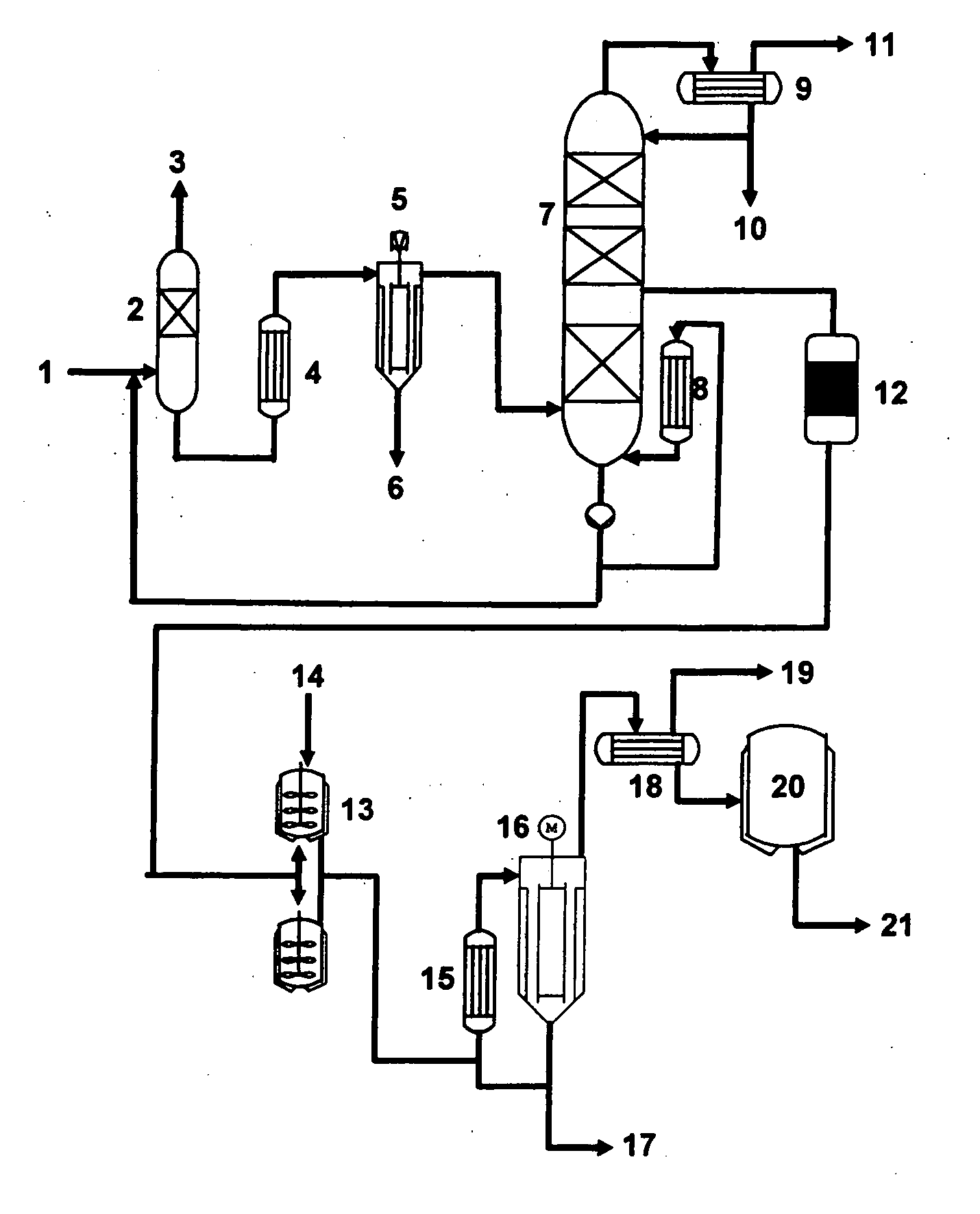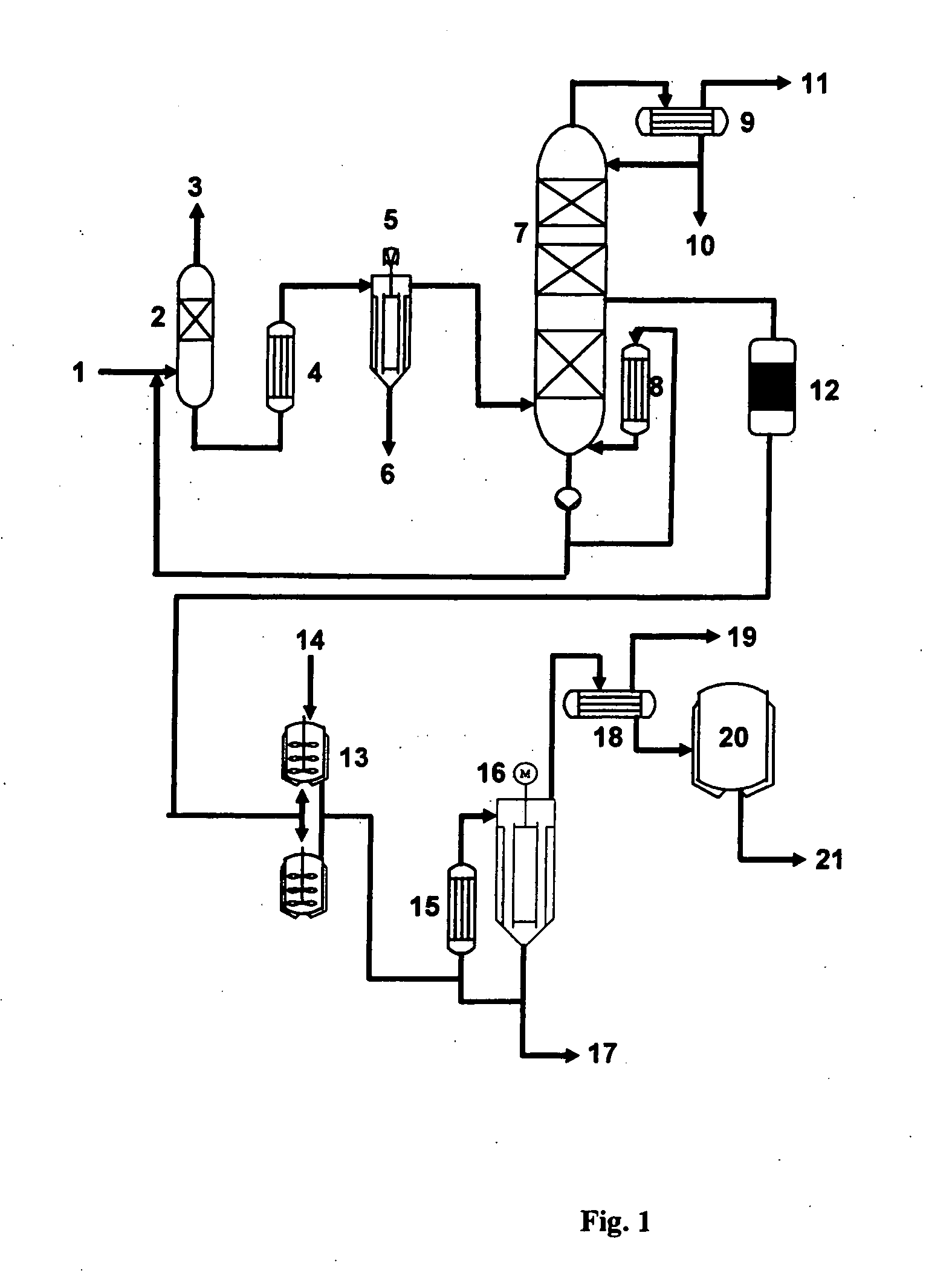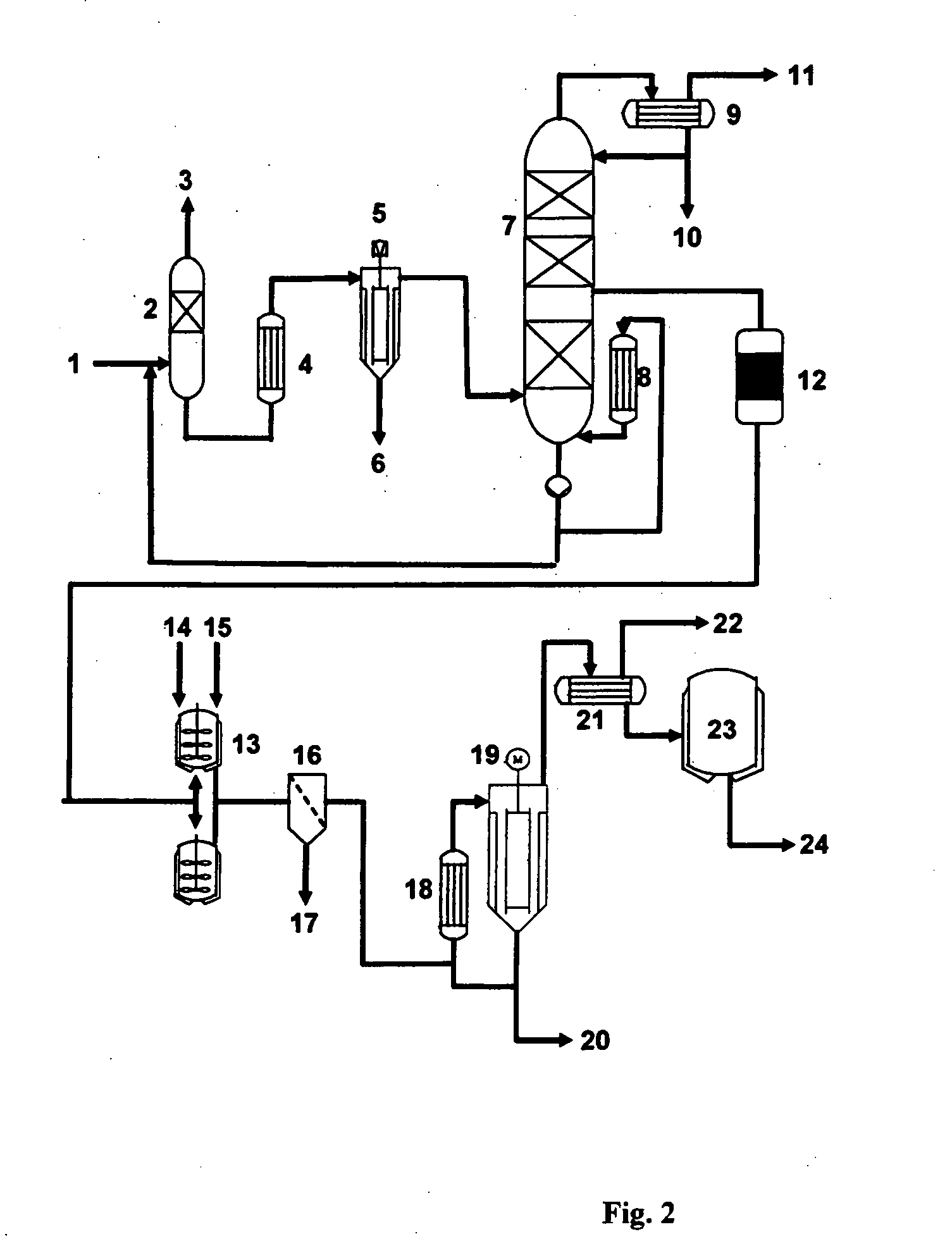Process for producing glycerol having low aldehyde and ketone content and improved storage stability
a technology of glycerol and aldehyde, which is applied in the preparation of carboxylic compounds, fatty-oil/fat refining, organic chemistry, etc., can solve the problems of glycerol based on vegetable or animal fat generally not having the requisite quality, and glycerol purified by standard methods lacking oxidation stability, etc., to achieve the effect of improving storage stability and improving storage stability
- Summary
- Abstract
- Description
- Claims
- Application Information
AI Technical Summary
Benefits of technology
Problems solved by technology
Method used
Image
Examples
example 1
Comparative Glycerol Analysis
A) Pararosaniline Stain Test
[0164] Formaldehyde, propionaldehyde, glyceraldehyde, hydroxyacetone and dihydroxyacetone were tested for their detectability at various concentrations by the pararosaniline hydrochloride stain test according to the Pharmacopoeia:
Formal-Propion-Glycer-Hydroxy-Dihydroxy-Sub-dehydealdehydealdehydeacetoneacetonestanceAbs.Abs.Abs.Abs.Abs.ppm552 nm552 nm552 nm552 nm552 nm00000030.06ndndndnd60.14ndndndnd90.29ndndndnd150.74ndndndnd303.80.070.020.020.02100>Limit0.990.040.020.02300>Limit>Limit0.180.020.02
In the above Table:
Abs. = absorption (at a wavelength of 552 nm in the photometer)
Limit = the absorption limit of the photometer which is 4
nd = not determined
Result:
[0165] The stain test is highly sensitive only for formaldehyde. The test is not suitable for detecting other aldehydes and ketones often present in glycerol, such as for example the direct oxidation products glyceraldehyde and dihydroxyacetone and the hydroxyace...
example 2
Comparison of Crude Glycerol Quality Produced by Various Oleochemical Processes
[0168] Various crude glycerols were analyzed for their contents of aldehydes and ketones. Glycerols from enzymatic hydrolysis (sample A, pilot scale); from high-pressure oil splitting (sample B, pilot scale); from alkaline low-pressure transesterification (sample C, production scale); from zinc-catalyzed high-pressure transesterification (sample D, production scale) and from catalyst-free high-pressure and high-temperature transesterification (sample E, pilot scale) were analyzed. The symbol “<” means below the corresponding detection limit as specified in Example 1.
ABCDESubstanceppmppmppmppmppmFormaldehyde0.64.96.712.2130Acetaldehyde1.10.72.413Acrolein2.51.81.39Acetone0.614Propanal2.96.22.20.79.6Butanal5.80.91.2Glyceraldehyde (GA)2.8129560Dihydroxyacetone (DHA)2.51868120Hydroxyacetone (HA)2.35118420Malondialdehyde40120Glyoxal / benzaldehyde2811260HexanalOctanalDecanalDodecanalTetradecanalHexadecanalTota...
example 3
Comparison of the Crude Glycerol Quality of Various Vegetable Raw Material Sources
[0170] Crude glycerols based on various vegetable oils were reacted by alkaline low-pressure transesterification on a production scale and the glycerols were analyzed immediately after splitting (A samples) and after removal of methanol and defatting (B samples). The following raw material sources were analyzed: high erucic rapeseed oil (1A+1B), low erucic rapeseed oil (2A+2B) and palm oil (3A+3B). The symbol “<” means below the corresponding detection limit as specified in Example 1.
1A1B2A2B3A3BSubstanceppmppmppmppmppmppmFormaldehyde2.80.54.50.74.90.9Acetaldehyde6.40.74.70.79.21.1AcroleinAcetone64.112.8Propanal10.41.87.20.712.43Butanal2.41.43.2Glyceraldehyde (GA)3446246Dihydroxyacetone (DHA)324107Hydroxyacetone (HA)2114Malondialdehyde2115Glyoxal / benzaldehyde16Hexanal10OctanalDecanalDodecanalTetradecanalHexadecanalTotal aldehydes / ketones542127.912.1121.518Total GA, DHA, HA5186103813
Result:
[0171] L...
PUM
| Property | Measurement | Unit |
|---|---|---|
| Temperature | aaaaa | aaaaa |
| Temperature | aaaaa | aaaaa |
| Fraction | aaaaa | aaaaa |
Abstract
Description
Claims
Application Information
 Login to View More
Login to View More - R&D
- Intellectual Property
- Life Sciences
- Materials
- Tech Scout
- Unparalleled Data Quality
- Higher Quality Content
- 60% Fewer Hallucinations
Browse by: Latest US Patents, China's latest patents, Technical Efficacy Thesaurus, Application Domain, Technology Topic, Popular Technical Reports.
© 2025 PatSnap. All rights reserved.Legal|Privacy policy|Modern Slavery Act Transparency Statement|Sitemap|About US| Contact US: help@patsnap.com



